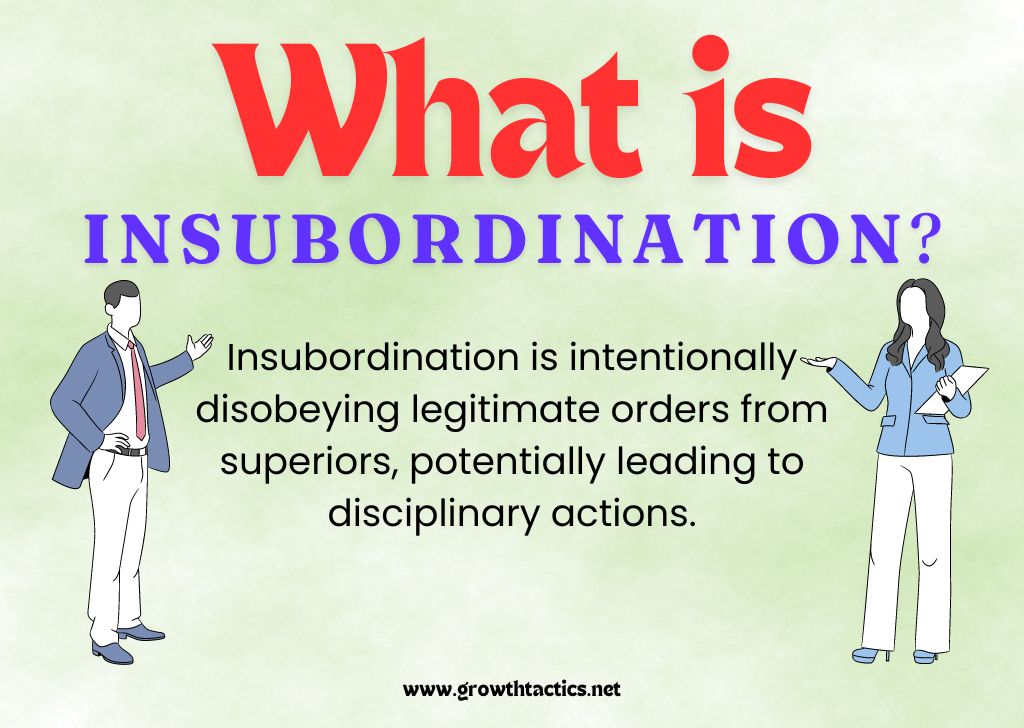Employee behavior that undermines a manager’s authority can be one of the most difficult workplace challenges. As a manager, you’re responsible for driving productivity, maintaining morale, and fostering a cohesive team environment. When an employee actively resists your direction or questions you in front of others, it can quickly damage team dynamics.
This type of toxic behavior must be addressed promptly and effectively. Mishandling the situation can enable undermining conduct, demoralize other team members, and weaken your standing as a leader.
In this post, we’ll explore constructive strategies and best practices on how to deal with employees who undermine your authority. The goal is to provide actionable steps you can take to resolve these issues, redirect negative behavior, and build an organizational culture of trust and respect. With the right approach, you can turn a difficult situation into an opportunity for growth.

Jump To Section
Why Do Some Employees Undermine Authority?
There are a few potential reasons why an employee may undermine a manager’s authority:
- Poor communication: Sometimes undermining stems from simple miscommunications between a manager and employee. If expectations aren’t clearly set, the employee may unknowingly act in ways that seem undermining. Making sure everyone is on the same page through open communication channels can help prevent misunderstandings.
- Personality conflicts: Clashing work styles or personalities between a manager and employee can lead to friction. If an employee feels their manager’s style doesn’t mesh well with their own, they may resist taking direction from them. Looking for common ground and compromise around working styles can help bridge gaps.
- Disengagement: Employees who feel disconnected from their work or company culture can sometimes act out through undermining behaviors. Bored, dissatisfied, or disillusioned employees may not feel invested in supporting their manager’s authority. Re-engaging these employees by addressing their concerns and giving them meaningful work is key.
How to Identify Undermining Behaviors

As a manager, it’s important to watch out for certain behaviors that may indicate an employee is deliberately undermining your authority. Here are some examples:
- Criticism and negative comments. The employee regularly makes critical, mocking, or sarcastic remarks about your decisions and leadership in front of other team members. This could be done openly in meetings or discretely in private conversations.
- Ignoring policies and directives. The employee consistently fails to follow your directions, flouts company policies, or goes directly against your instructions. When confronted, they may feign ignorance or make excuses.
- Sabotage. The employee deliberately stalls important projects, makes mistakes, or creates obstacles to your initiatives. They may spread chaos and blame it on you.
- Spreading rumors. The employee gossips and shares negative opinions about you or your leadership abilities with others. They try to turn team members against you or foster distrust.
- Withholding information. The employee does not share important information, data, or updates with you in a timely manner. They may keep you out of the loop intentionally.
- Resisting change. The employee pushes back against or refuses to implement any new processes, technology, or direction that you initiate. They undermine your efforts intentionally.
- Blaming or scapegoating. The employee is quick to blame you when things go wrong, even when you are not at fault. They may try to make you look incompetent.
- Insubordination. The employee repeatedly ignores direct instructions, refuses reasonable requests, or challenges your authority in front of others.
Being able to identify undermining behaviors is the first step to addressing them effectively as a manager. If you notice a pattern of disrespect, resistance, or sabotage, it’s important to intervene promptly.
Have a Direct Conversation
It’s critical that you’re ready to have a direct, but respectful, conversation with the employee about their behavior. Let them know you’ve found some of their actions concerning and want to better understand what’s going on. Make it clear you’re speaking from a place of wanting what’s best for the team’s productivity and morale overall. Don’t let their undermining behavior continue without addressing it openly.
When you’re ready to have the discussion, start by asking them to share their perspective. Listen carefully and try to find some common ground. See if you can uncover the root of their frustrations. Provide clarity on your expectations for workplace behavior and dynamics. Though you may disagree, aim to steer the dialogue in a constructive, solutions-focused direction. Make it a two-way conversation, not a lecture. The goal is resolving the issue respectfully, not proving yourself right.
Show you’re willing to take their feedback seriously. If there’s truth to any of their concerns, own up to valid criticisms. But don’t let the conversation devolve into personal attacks in either direction. Keep bringing it back to tangible steps you can both take to work together more productively.
Use Active Listening

As a manager, it’s critical that you hear the employee’s perspective when dealing with undermining behaviors. Active listening shows that you genuinely want to understand their viewpoint, even if you don’t agree with it.
When sitting down with the employee, make an effort to listen without interrupting. Don’t just wait for your turn to speak – really focus on what they are saying. You may find they have valid concerns about your leadership style, company policies, or the work environment. Let them share their thoughts openly and respectfully.
Ask clarifying questions to better understand their perspective. Try saying things like “Tell me more about that experience” or “Help me understand where you are coming from.” Reflect back what you heard in your own words to confirm you didn’t misinterpret their meaning.
Avoid getting defensive or dismissive. You don’t have to agree, but it’s important they feel heard. This will create more opportunities for finding common ground and resolving the issue productively.
Look for Common Ground
When dealing with an undermining employee, it’s important to look for common ground and find solutions that work for both parties. As a manager, take time to understand the employee’s perspective – there may be valid concerns or issues that need to be addressed.
Start the conversation by asking open-ended questions to better understand where the employee is coming from. Listen without judgment and resist defending yourself initially. Once the employee feels heard, you can work together to find areas of agreement.
Highlight your shared goals for the team and organization. Remind the employee that you both want the team to be successful. Frame the issue as a problem to be solved jointly, rather than a personal conflict.
Ask the employee for input on finding a resolution. Get agreement on reasonable solutions that meet both your needs. This could include shifting responsibilities, changing workflows, additional training and support, more frequent check-ins, or addressing unresolved conflicts.
Focusing on common interests and win-win scenarios can help diffuse tension and rebuild trust. With improved understanding, you can get the relationship back on track.
Set Clear Expectations

As a manager, it’s important to set clear expectations for your team. This includes defining roles, responsibilities, and boundaries for acceptable conduct in the workplace.
When dealing with an employee who undermines you, take time to clarify expectations. Schedule a meeting and have an open discussion about their role and your guidelines for appropriate behavior. Be direct yet professional.
For example, you may say: “As your manager, I expect you to complete your assigned tasks efficiently and respectfully. Undermining my decisions in front of the team is unacceptable. Going forward, I need you to voice any concerns privately so we can resolve issues together.”
Outline specific examples of undermining behavior that must stop. Explain how it negatively impacts you, the team, and the organization. Make it clear that further incidents will lead to disciplinary action.
Setting direct expectations with concrete examples helps prevent confusion. It gives the employee clear direction while putting them on notice that you won’t tolerate inappropriate conduct.
Be sure to document this conversation and follow up regularly to ensure expectations are being met. If undermining continues, swiftly enforce consequences. Consistency is key when redirecting negative behaviors.
Make a Performance Improvement Plan
As a manager, you have a responsibility to address poor performance and give employees a chance to improve. A performance improvement plan (PIP) is a useful tool for documenting issues and providing a structured timeline for improvement.
To implement a PIP:
- Schedule a meeting to discuss performance issues directly. Be specific about behaviors that need correction and their impact. Allow the employee to share their perspective.
- Draft a formal PIP document outlining the performance issues, goals for improvement, action steps, and a timeline. Include concrete metrics for success. Discuss and finalize the PIP together.
- Schedule follow-up meetings for coaching and feedback during the PIP period. Track progress and document all discussions.
- If goals are met, conclude the PIP. If not, continue the timeline or take further action such as probation or termination.
A PIP puts problematic behaviors on record. It demonstrates your efforts to work with the employee while providing them an opportunity to improve. With clear expectations and deadlines, a PIP can get performance back on track or serve as grounds for termination if needed. Maintain confidentiality and objectivity throughout the process.
Involve HR if Needed
There may come a point where an undermining employee’s behavior warrants formal discipline. If you’ve had multiple direct conversations explaining the impact of the behavior, set clear expectations, and the undermining persists, it’s time to get HR involved.
HR can help ensure proper protocols are followed if the situation escalates to a written warning, probation period, or termination. They will also document each step of the progressive discipline process. Formal discipline is appropriate if the undermining behavior continues after multiple attempts to correct it, or if the behavior is egregious, such as:
- Openly criticizing management in front of other team members
- Encouraging others to resist new initiatives or processes
- Spreading lies or gossip about colleagues
- Refusing to complete assigned tasks
- Repeated tardiness/absences
- Sabotaging team projects or milestones
Bringing in HR provides official documentation and demonstrates how serious the issue has become. However, you want to avoid escalating to formal discipline before exhausting other options. The goal should be to turn the behavior around, not punish the employee. But if there’s no improvement over time, formal discipline may be the next step.
Conclusion: Foster a Positive Team Culture
As a manager, dealing with difficult employees who undermine your authority can be challenging. However, by taking a strategic approach, you can turn these situations into opportunities for growth.
To recap, start by identifying the specific behaviors that are undermining so you can address them directly. Have candid one-on-one conversations where you practice active listening to understand their perspective. Find common ground and set clear expectations moving forward. Implement performance improvement plans to provide structure and accountability. Get HR involved if disciplinary action is required.
The goal with all of these steps is not just to stop the undermining behaviors but to resolve the underlying issues and improve team cohesion. With sensitive leadership and open communication, you can foster a culture based on mutual trust and respect, even when facing discord. As challenges arise, use them to demonstrate that you support your employees and want the best for both them and the organization. When you lead by example, it inspires your team to lift each other up as well.


